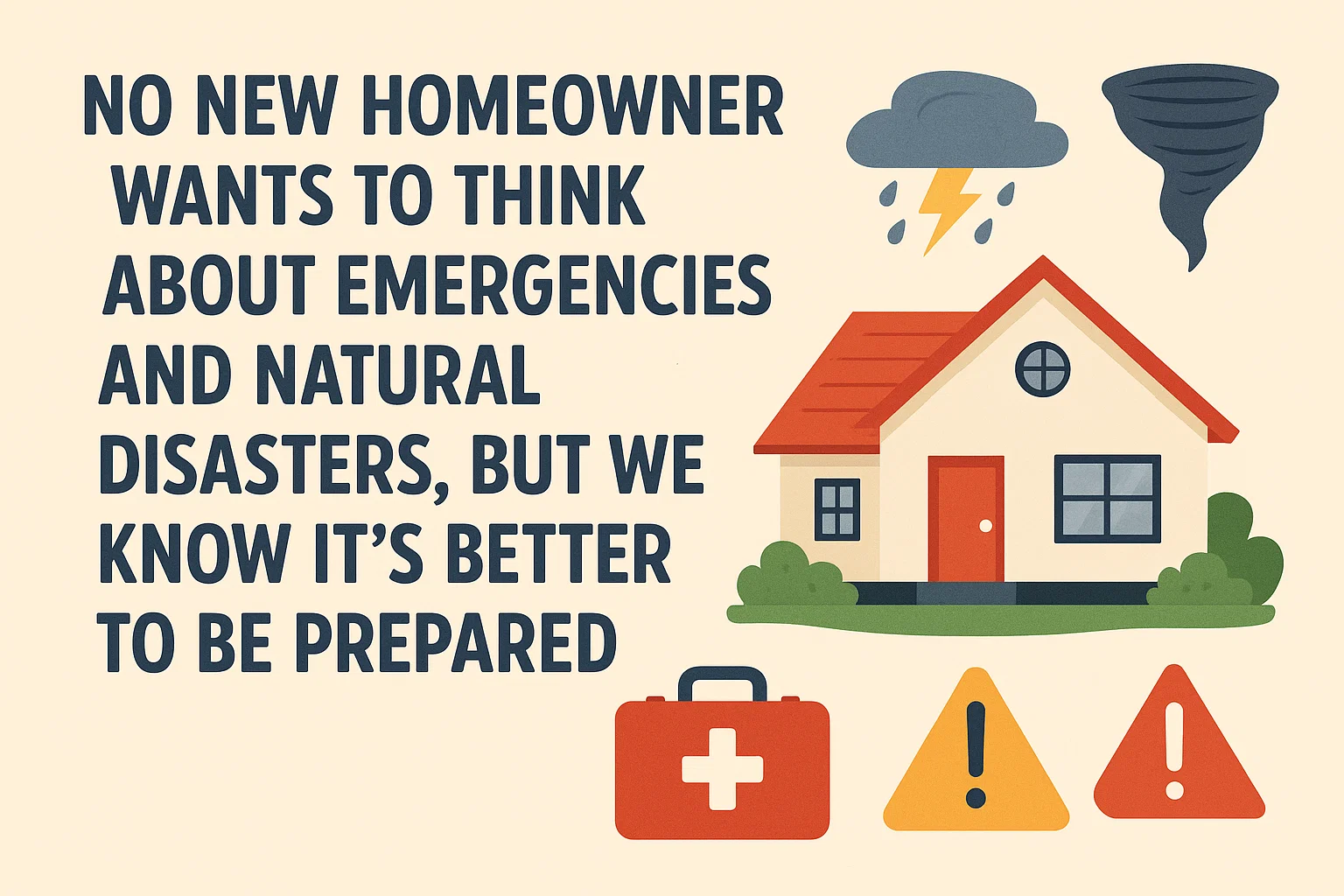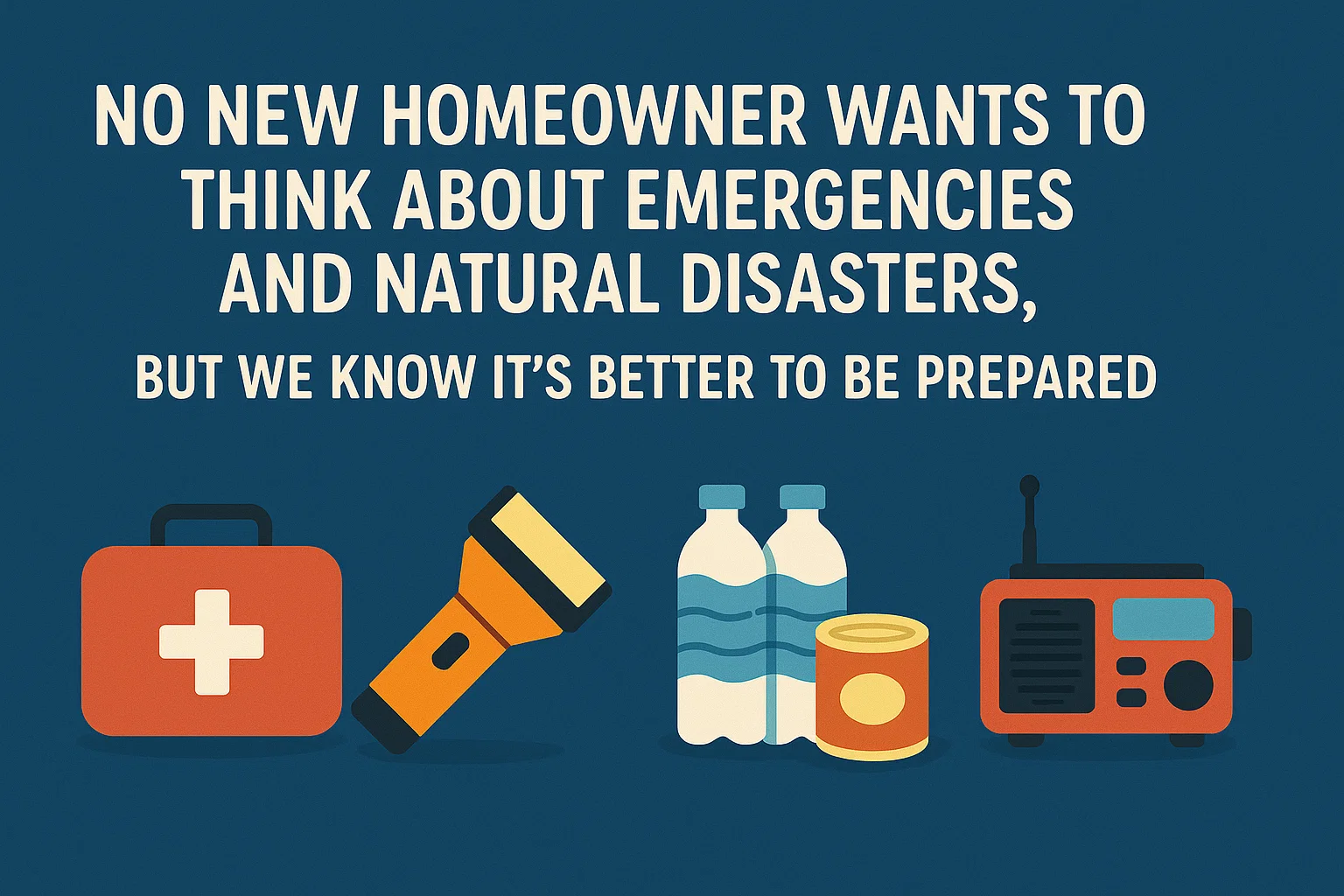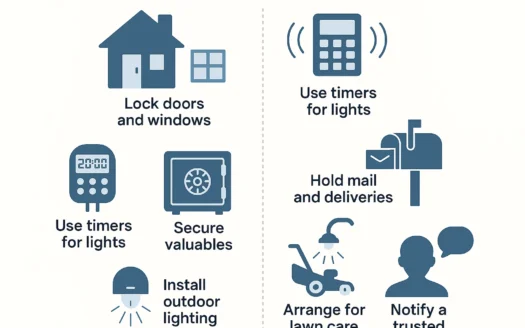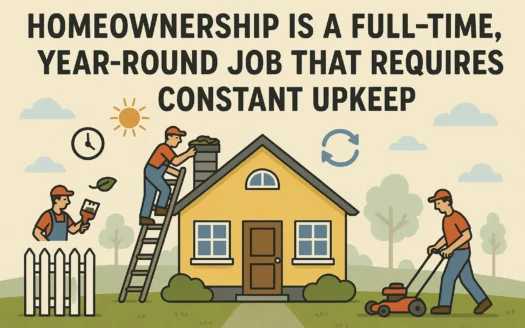No New Homeowner Wants to Think About Emergencies and Natural Disasters, but We Know It’s Better to Be Prepared

No New Homeowner Wants to Think About Emergencies and Natural Disasters, but We Know It’s Better to Be Prepared
Being a new homeowner brings new responsibilities, including developing an emergency preparedness plan for you and your family.
What Is an Emergency Preparedness Plan?
An emergency preparedness plan is exactly what it sounds like: a plan to prepare for emergencies. More than that, though, it’s a plan to turn to when disaster strikes. These customized plans give your family guidance, so you know exactly what to do in a worst-case scenario.
What Emergencies Should I Prepare For?
What emergencies you plan for depends on where you live. If you’re in a flood-prone area, you’ll want to know what to do if the roadways – and your first floor – get filled with water. On the other hand, flood emergency planning won’t help much in the middle of a tornado or wildfire.
A quick internet search reveals common emergencies in your area. This guide talks about general emergency planning; apply these tips to any situation, but customize them for your unique needs.
How to Create an Emergency Preparedness Plan
After determining the most prevalent disasters in your area, gather your family to collectively develop an emergency preparedness plan.
Determine Evacuation Routes
Depending on the disaster, you may be ordered to evacuate. It’s helpful to know how to safely exit your home from multiple places, so you’re not scrambling for a solution in the middle of an emergency.
- Consider specific challenges you may face when evacuating from bedrooms. Are children upstairs? Ensure they know how to exit safely, such as using a fire escape ladder installed in a window.
- Account for mobility limitations. Elderly family members may need assistance, so plan accessible routes free of obstacles.
Collect Information
In an emergency, time is critical. Gather essential contacts and documents ahead of time:
- Important phone numbers: doctors, hospitals, veterinarians, and out-of-town contacts.
- Scanned copies of IDs, insurance cards, deeds, medical records, and other critical documents.
Designate a Gathering Point
- Choose a safe spot inside your home (e.g., an interior room or storm cellar).
- Select a nearby outdoor meeting place (e.g., a neighbor’s yard) and a secondary location in town (e.g., a school or store).
- When traveling, agree on a gathering spot in case someone gets separated.
Assign Responsibilities
Clearly outline roles for each family member:
- Who grabs supplies? Who assists children, grandparents, or pets?
- Involve kids by assigning age-appropriate tasks, like watching siblings or retrieving specific items.
Practice, Practice, Practice!
Run drills to identify flaws in your plan and ensure everyone knows their role:
- Teach children to memorize their full name, address, and phone number.
- Clarify when and how to call 911, emphasizing what constitutes an emergency.
Assembling a Survival Kit
Also known as a disaster kit or go bag, this should include essentials:
- First-aid supplies, flashlight, battery-operated radio, phone chargers, and copies of documents.
- Customize for pets, babies, or medical needs (e.g., medications, pet food, diapers).
Pro Tip: Use our Survival Kit Packing List to stay organized.
Extra Tips
- Keep at least half a tank of gas in your car for unexpected evacuations.
- Install smoke detectors, CO2 detectors, and fire extinguishers, and test them annually.
- Learn local warning systems and verify emergency alerts via reliable sources.
- Review insurance policies to ensure coverage for common disasters in your area.
Prepared Is the Best Plan
Disasters happen unexpectedly. Taking time to prepare in advance can help keep your family and home safe. For all your new home needs, visit Pre-ConstructionHomes.com – and follow us on social media for more tips!




